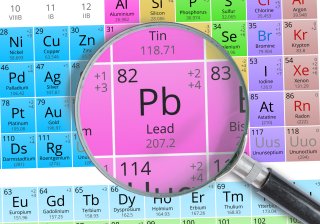EPA Lead (Pb) Research
Even though lead (Pb) exposures have dramatically declined in recent decades, they still pose serious risks to public health. No safe level of lead exposure has been identified for children, making them particularly vulnerable and underscoring that anything you can do to reduce exposures can improve life outcomes.
Lead Research and Risk

Some communities still face potential exposure and health risks from corroding lead pipes, old lead paint, and lands that are still contaminated from past practices. Using a risk paradigm that includes both risk characterization and risk management, EPA connects environmental exposures, adverse outcomes, and risk reduction actions. The Agency is currently conducting research across the environment and at critical life stages in our efforts to understand and mitigate risks associated with exposure to lead.
Air Research

Since the 1980's, EPA and its federal partners have completely phased out lead in gasoline and dramatically reduced lead in industrial air pollution. As a result, levels of lead in the air decreased by 97 percent. However, because there is no safe level of lead exposure, EPA researchers continue to work on efforts to monitor and assess lead contamination in the air and support efforts to protect people from potential exposures and associated health risks.
Drinking Water Research

EPA researchers are working with the Agency's Office of Water, water utilities, municipalities, and other partners to take actions to keep lead out of drinking water supplies. They are leading efforts to better understand how the dynamics of aging water infrastructure, water chemistry, and water treatment can cause elevated lead levels in drinking water and what steps are needed to take to reduce risks.
Land and Legacy Research

EPA researchers are exploring how lead in Superfund and other sites contaminated by past practices ('legacy pollution'), such as lead production and the use of lead-based paints and gasoline, can impact exposure and related health risks. Their work includes evaluating the link between clean-up efforts and reductions in blood lead levels, developing innovative ways to make lead indigestible in the body, and studying soil intake by children as a way to guide clean up procedures and techniques.
EPA Lead Research: Land and Legacy
Research to Protect Children's Health

Reducing lead exposure to children has been a top EPA priority since its establishment in 1970. The Agency’s research program has played a critical role providing the scientific foundation for actions that have dramatically lowered blood levels in children. However, that work is not complete. EPA researchers continue to partner with those working to reduce lead wherever children may encounter it in their environment.
